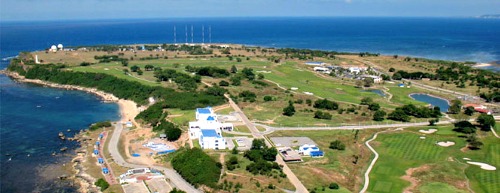Master Plan Breathes New Life into La Union Freeport Zone
A new development plan will be breathing new life to the Poro Point Freeport Zone (PPFZ) by transforming it into a premier business and leisure destination in Northern Luzon.
The Poro Point Management Corporation (PPMC), which is tasked to develop La Union’s free port, has tapped urban developers Palafox Associates to take a look at the 236-hectare former United States military facility that used to be the Wallace Air Station.
Florante Gerdan, PPMC president and chief executive officer, said Poro Point has had two master plans - once in 1996 and in the other in 2002. Both plans guided development planners, investors and business locators in transforming the property into a trade and tourism hub.
Gerdan said a new master plan is underway that will adjust to new real estate market conditions in the context of market trends in the Asian and international setting.
“We have made adjustments through the years. Today, we want to re-validate whether the previous plans still apply,” Gerdan said during the stakeholders’ meeting and master planning earlier this month.
One of three economic hubs under the Bases Conversion Development Authority next to John Hay special economic zone and the Subic Freeport zone, the Poro Point free port has 146 hectares-investment area for development.
The free port presently houses existing facilities namely the Voice of America radio transmitter, the Philippine Air Force, and a lighthouse complex.

La Union Freeport Zone
First to build a hotel and casino complex in 2006 was property developer Thunderbird Resorts Inc., whose Santorini-inspired accommodation facility sits on a 65-hectare plot inside the port.
The PPMC seeks to further develop four investment areas namely the seaport, airport, information technology-park, and light industrial area and a tourism complex.
Ives Nisce, PPMC board of directors chairman, said Poro Point is the smallest former military base in Luzon compared to Subic which occupies 40,000 hectares and John Hay’s 600 hectares.
“But we (Poro Point) are unique because we are both a seaport and an airport,” he said.
Nisce said Palafox Associates had shared its initial assessment during the multi-sectoral meeting hoping that interest groups, government and private sectors and communities surrounding the port will provide inputs for the new development plan.
“We need comments and additional inputs from various sectors to be able to chart the direction that we will tread for Poro Point,” he said.
Urban planner Karina Palafox said initial site analysis had shown Poro Point’s potential as a key urban hub in the Ilocos Region.
Palafox said Poro Point’s development options include a regional tourism center, agri-business hub, information, communication and technology hub, and a governance center.
She said the new master plan will be in harmony with the two previous plans including the development trends in the Asian region for smart and gateway cities which are airport-railway-port driven.
The Palafox master plan divides Poro Point to at least seven major sections, namely: an exclusive zone for high-end and mixed residential including an ICT and business park; an area for mixed-used developments such as industrial park, medical village, campus and golf course expansion; an area for town center composed of government offices, church, commercial mall, convention center and protective services; a recreational zone where the lighthouse now stands to include a museum, amphitheater, restaurants and tourism center; a seaport zone for warehouse complex or stockyard, cruise ship repairs, railway extension and two other zones for tourism and transit hub.
The plan took note of tourist-magnet sections such as the lighthouse area, the free port’s highest point, which can accommodate thousands of tourists during festivities. The lighthouse also has a vantage point of the Poro Point peninsula. (Cristina Arzadon/PIA1, La Union)


